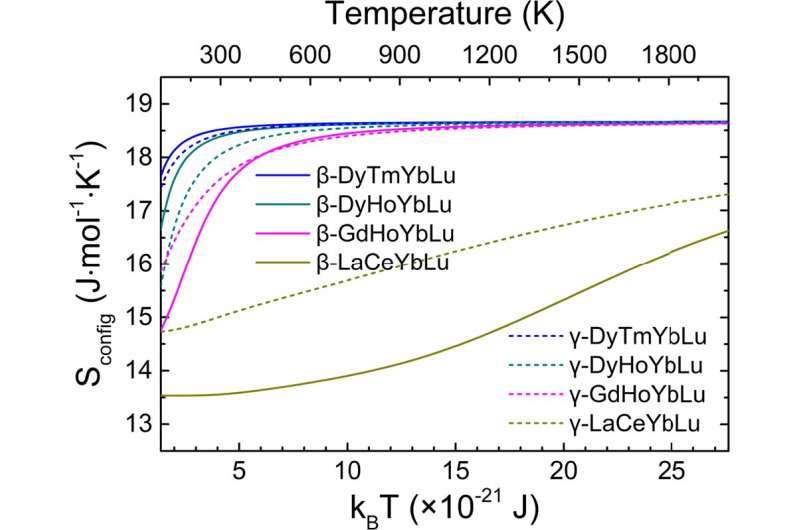This article has been reviewed according to Science X's editorial process and policies. Editors have highlighted the following attributes while ensuring the content's credibility:
fact-checked
peer-reviewed publication
trusted source
proofread
Researchers propose strategy to design high-entropy environmental barrier coating material

In aviation technology, environmental barrier coatings (EBCs) are designed to protect the turbine components made of SiCf/SiC ceramic matrix composites (CMCs) from environmental degradations in the combustion environment. Multicomponent/high-entropy rare-earth disilicates ((nRExi)2SI2O7) are promising in EBCs applications.
However, the design of (nRExi)2Si2O7 materials remains a crucial challenge, due to the versatile combinations of multiple RE elements, as well as the complex polymorphic phase competitions during materials fabrication.
In a study recently published in Nature Communications, researchers from the Institute of Metal Research, Chinese Academy of Sciences, have uncovered the mechanisms of phase formation capability for multicomponent/high-entropy rare-earth disilicate materials and proposed a compositional design strategy.
The researchers synthesized 21 multicomponent (REI0.25REII0.25REIII0.25REIV0.25)Si2O7 (RE = Y, La, Ce, Eu, Gd, Tb, Dy, Ho, Er, Tm, Yb, and Lu). They found that the phase formation and stabilization of these materials was dependent on the average RE3+ radius as well as the deviations (σr) of different RE3+ combinations.
Based on high-throughput density-functional-theory simulations, the researchers constructed ensembles containing several hundreds of representative configurations for model compositions, and calculated the configurational entropy mixing.
They proposed an entropy descriptor, which captures whether the configurational randomness brought by multiple RE3+ cations can be sufficiently accommodated in the crystal lattice, and thus can be used to predict the phase formation capability of (nRExi)2SI2O7 materials.
Based on these findings, the researchers proposed a strategy to design (nRExi)2SI2O7 materials with controlled phase formation capability and high-temperature stability, which leads to efficient design and synthesis of many new (nRExi)2SI2O7 (n = 2, 5, 6; equal and non-equal molar fraction of RE) materials.
More information: Yixiu Luo et al, Phase formation capability and compositional design of β-phase multiple rare-earth principal component disilicates, Nature Communications (2023). DOI: 10.1038/s41467-023-36947-6
Journal information: Nature Communications
Provided by Chinese Academy of Sciences





















